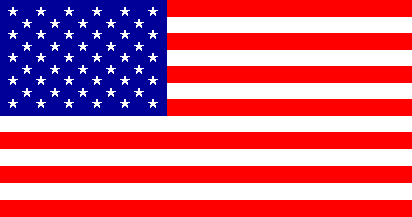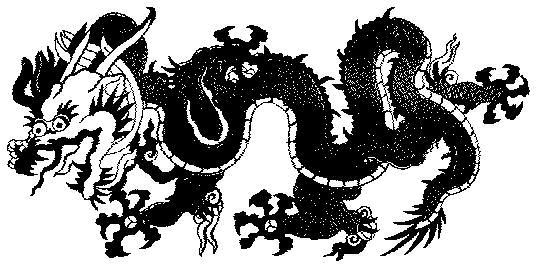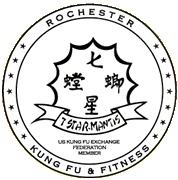

Chinese Dragon


Chinese Dragon
Use the following links to jump to a specific section, or just scroll down!
| My friends' band Junction Five. My buddy Mark plays bass, Aaron is on vocals and guitar, Tommy's on guitar, and Danny is the drummer. As of now I'm spending most of my time trying to make them famous. For more information, check out their myspace, youtube video, facebook, and they are also on purevolume and Twitter. | |

| Since January of 2008, I have been at student at the Rochester Kung Fu and Fitness (formerly Rochester Kung Fu Exchange). The Chinese phrase "Kung Fu" ( ) doesn't directly mean martial arts, but it is very often associated with Chinese martial arts. The style of Kung Fu practiced at my school is the "Northern Shaolin Seven Star Praying Mantis Boxing Kung Fu" ( ) doesn't directly mean martial arts, but it is very often associated with Chinese martial arts. The style of Kung Fu practiced at my school is the "Northern Shaolin Seven Star Praying Mantis Boxing Kung Fu" (    ). Our instructor, or "SiFu" ( ). Our instructor, or "SiFu" ( ), is Paul Gruschow. He is a student of Master Raymond Fogg, who is considered to be one of the best Seven Star Praying Mantis ( ), is Paul Gruschow. He is a student of Master Raymond Fogg, who is considered to be one of the best Seven Star Praying Mantis ( ) practitioner in the world. For more information, check out http://www.rochesterkungfufitness.com/, and tell them I send you. ) practitioner in the world. For more information, check out http://www.rochesterkungfufitness.com/, and tell them I send you.
|
|
| Here is a picture of me, and my favorite singer/songwriter, the very talented Sarah Slean. For more on Sarah Slean, click
HERE |
A little bit about myself, I graduated from Rochester Institute of Technology back in February of 2001, with a major in computer science. I spent a few years working at Mark's Pizzeria and looking for a job. In August of 2006, I was hired by the City of Rochester. I worked for the city for 5 months, left, then went back in a different capacity for 10 months. I started another job with Monroe County in August of 2008, and I was there for only 10 months before leaving again. As of now I'm unemployed.
|
| The Boston University Naval/Marine Corps color guards, competing at the 2001/2002 Military Excellance Competition, at Cornell University, Ithaca, New York. |

| The United States of America UNITED WE STAND |

| State of New York |

| The United States Navy |
Fairport, New York, is a suburb of Rochester, and is part of New York's Finger Lakes Region. The town of Perinton, which encompasses the village of Fairport, has a population of 46,090 in 2000. Fairport is an old Erie Canel village. Many of the village's early history was related to the canel. Now days, Fairport holds an annual Canel Days festival in early June, which attracts a large number of people from around the country.
The Town of Perinton is located in an area originally named Northfield in 1790. In 1793, Glover Perrin and his extended family settled in the Perinton area. The area was renamed Perinton, and the town was officially established in 1812. The initial town center was in the Hamlet of Egypt, in the southeast corner of Perinton. After the Erie Canal was completed in 1825, the Village of Fairport, located in the center of Perinton and on the canal, became a boom town. At that time, the Fairport-Perinton Road traveled through the Village of Fairport, and it provided a route for farmers from the north to transport their produce to the canal, in order for them to reach markets all over New York. Other parts of Perinton, such as Bushnell's Basin and Fullam's Basin, which were both located on the canal, prospered also. The Village of Fairport eventually became the center of the town, taking the place of the Hamlet of Egypt.
The City of Rochester is named after Colonel Nathaniel Rochester. In 1803, Colonel Rochester, along with two other fellow Maryland aristocratics: Major Charles Carroll and Colonel William Fitzhugh Jr., bought 100 acre of land along the Genesee River by High Falls.
Reference:
Perinton Historical Society. Perinton, Fairport, and the Erie Canal. New York: Arcadia, 2001.

|
|
|
| The Coat of Arm of British Hong Kong | Hong Kong, Great Britain | Hong Kong, China (after June 30, 1997) |
I moved to the United States in the summer of 1990 with my family from Hong Kong. The main reason for the move was the Tiananmen Square Massacre on June 4th, 1989. Like many people in Hong Kong at the time, my family was worried about the future of Hong Kong, when it reverted back to Chinese rule in 1997, after being a British Crown Colony since 1842. People were worried that Hong Kong would lose its capitalistic economy, freedom, and human rights, after the hand-over in 1997. People were also worried that the Chinese Communist governemnt might send in the People's Liberation Army to suppress the democratic and free society that Hong Kong has enjoyed for over fifty years, partially in retaliation for the massive demonstrations against the Communist Party after the Tiananmen Square Massacre. As a result, between 1989 and 1997, a large number of people with valuable technical and business skills immigrated to countries like The United States, Canada, Great Britain, Australia, New Zealand, and Singapore. Since 1989, China has went through some reforms and changes, and has boomed socially and economically. I was in Hong Kong in the summer of 1997 to witness the hand-over ceremony (on TV), which was attended by the President of China, Jiang ZeMan, Prince Charles of Great Britain, and Britain's Prime Minister Tony Blair. Chinese troops were send in to replace the "retreating" British troops, but no conflict ever occurred, as some had feared. And to this day, Hong Kong has remained a fairly autonomous area, with its own economy and regional government, and China has assumed a fairly hand-off policy on Hong Kong. Ever once in a while, China does show the Hong Kong government who the real boss is, but other than that, Hong Kong has been allowed to make its own laws and manage its own economy. In 1999, a less well known city, the Portugese colony of Macau, also reverted back to Chinese rule. It also occurred without any incident.
I traveled back to Hong Kong and China in the summer of 2001. It was sort of a sight-seeing/relatives-visiting type of trip.
*** Hong Kong pictures added March 20, 2002 ***
(Click on each picture for a larger photo)
|
| Hong Kong's Skyline, in the summer of 2001. This area is known as Central, and on some maps, it's also called Victoria. It is the heart of Hong Kong, where businesses' headquarters, governmental buildings, and military commands are located. If there is a capital for the city of Hong Kong, this is it. Also, the eastern half of the Victoria Harbour is seen in the center, and the eastern Kowloon peninsula is seen on the upper left of the picture. |
|
| Hong Kong's night time skyline. |
|
| A close up view of the Hong Kong Conference and Exhibition Centre, which was built on land reclaimed by filling in part of Victoria Harbour. The picture below pinpoints some of the important buildings in this picture. |
|
| Same as above, but with some important buildings identified. The tallest building in Hong Kong (in 2001), which was also the second tallest building in Asia, is pointed out in the upper right hand corner of this picture. And for those of you with bank accounts at HSBC, you can also see its headquarter in this photo. |
|
| In this picture is the Government House (see arrows), which is the official residence of the Chief Executive of Hong Kong. It was also the official residence of the Governor of Hong Kong from 1855 to 1997. The current resident is Chief Executive Sir Donald Tsang, who has been in office since June of 2005. The last (British) Hong Kong Governor to live in the Government House was the Right Honourable The Lord Patten of Barnes (aka Christopher Francis Patten). For a list of all 28 governors of Hong Kong, click here. |
|
| The Prince of Wales Building, which was the headquarter of the British Army stationed in Hong Kong. It has been renamed the Chinese People's Liberation Army Forces Hong Kong Building, and is the headquarter of the Chinese People's Liberation Army (PLA) Hong Kong Garrison. |
|
| The Tian Tan Buddha, also known as the Big Buddha, located on Ngong Ping, Lantau Island, west of Hong Kong Island. |
Hong Kong in 2001 was a lot like I remembered (from 1997), but it was still recovering from the economy storm that swept through Asia back in 1998. Politically, it is stable. China has kept its hands off Hong Kong, but it does occassionally show who is in charge, by pressuring the Hong Kong High Court to judge cases to China's liking.
*** China pictures added March 20, 2002 ***
China, on the other hand, is booming. Between 1997 and 2001, southern China has built a high-speed highway system, similar to the Interstates President Eisenhower built in the 1950's. There are gas stations everywhere, and import cars roam the streets of major cities. Also in the major cities, people can dine at Pizza Hut, McDonald's, or KFC. They can buy the latest in computer technology, most of them manufactured in China, but are powered by Pentium CPUs. People are dressed to the latest fashion, like those in Hong Kong and Japan. Bikes in China have became part of the Chinese transportation history. People nowadays work to buy motorcycles in the rural area, or in the cities, people buy cars built by Chinese automakers working in conjunction with foreign car companies like GM & Volkswagen. The middle class is growing steadily, but the majority of the population is still in the low income/farmer class. At this rate, China's major cities are starting to look like other modernized cities in the world, but at the same time, leaving behind the rural areas. The rural areas are currently about 20 years behind the urban areas in economy and technological advances. Because of this, the Chinese government is trying to keep a tight grip on the population of the rural area, to prevent unrest and mass migration to the cities.
*** Macau pictures added March 20, 2002 ***
Macau, the former Portugese colony, is known as the Las Vegas of the orient. It is currently going through a casino boom. Many new casinos have been built in the past couple years, and many of China's new middle class like to travel there to gamble.
Family history:
For more information on the Lo's, click on the Chinese word for 'Lo' below:
| Modified Friday, October 30, 2009. 10:43 | back
|